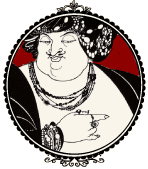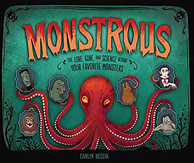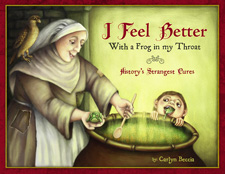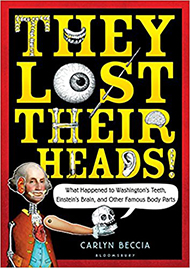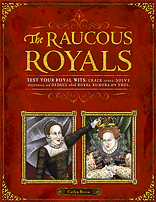
On November 1, 1661, Spanish actors and musicians could be heard dancing a sweet and melodious ballet below Queen Marie Theresa’s window. Unfortunately, her husband Louis XIV and many of the courtiers could hardly appreciate the serenade while Marie Theresa was screaming, “I don’t want to give birth, I want to die! (1). Without much to dull the pain, many women of the time probably related to her plea. Throughout history, midwives and doctors have used various strange and sometimes lethal concoctions to ease the pain of child birth. Here are just a few of my favorite:
 The Plant of Joy
The Plant of JoyThe ancient Egyptians drug of choice was opium otherwise known as the “plant of joy.” Opium was derived from the sleep inducing poppy plant and with the correct dosage could pretty much knock a pregnant horse out. 16th century doctor, Paraclesis later combined opium with his own secret ingredients of crushed pearls, henbane and frog spawn and named it
laudanum. By the 19th century, laudanum could be found in every major pharmacy packaged in its pretty glass bottle for dainty ladies to sip with their brandy. Today, opium is a derivative of the highly addictive painkiller, morphine. It’s typically given to patients in extreme pain, but would never be administered to a woman in labor unless she wanted her newborn baby to get an early start on drug addiction.
 Willow Bark
Willow BarkThe Greeks favored willow bark to ease child birth pain and although certainly not as powerful as opium, willow bark did relieve some pain. By the 19th century, chemists figured out that the Greeks were on to something and were able to distract the pain relieving component of willow bark called salicylic acid, known today as Aspirin. Most doctors today advise pregnant women not to take aspirin because it can cause placental abruptions and might actually delay labor.
 The gift of myrrh
The gift of myrrhYou have probably heard the Christmas story of the three wise men who visited the baby Jesus bringing gifts of gold, frankincense and myrrh. What is still up for debate is whether the myrrh was a gift for Jesus or Mary. Myrrh has long been used as a pain killer because of its soothing effects on inflamed tissues.
 Grease the Wheel
Grease the WheelMedieval midwives probably win the award for wacky pain killers. They often used oily substance like the grease of a duck or hen to ease the mother's pain and speed the baby’s passage into the world. Sometimes they even injected olive oil into the pregnant woman’s rectum. If baby’s first medieval slip n’ slide didn’t work than they would try screaming into the women’s vagina to coax the baby out.
The veil of painThings got a little dicey by the 14th – 17th period for midwives who were often accused of witchcraft when trying to ease a new mother’s pain. In 1591, James VI ordered a new mom and her midwife executed for witchcraft because they had taken a pain relieving concoction. (Granted, the concoction happened to contain dug up remains of various corpses...but ease up James!) At the time, the Church taught that childbirth was part of the sins of women blaming it on Eve and her forbidden fruit. bla bla bla. Women were expected to endure the pain and accept their lot in life. For this reason, the stoic Isabella I gave birth under a veil because she didn’t want the midwife to see her in pain. If you have ever been in labor than you probably know that by the end you don’t care if you are half-naked.
 Chloroform a’ la reine
Chloroform a’ la reine
By the 1800s, James Young Simpson was the first to use diethyl ether during child birth. Simpson then experimented with chloroform and found that just knocking the woman out cold was the way to go. Women would inhale the fumes, drift into la la land and then wake up to find a baby in their arms. Sounds ideal, right? Maybe for the mom. Both ether and chloroform passed to the baby so there must have been some groggy babies being born.
Queen Victoria was the first royal to give her official stamp of approval to chloroform assisted births. Soon, taking chloroform during labor became so fashionable with the upper class that it was named Chloroform a’ la reine.
Today, many women choose natural child birth and experience the same gut wrenching agony as women of the past. I have a lot of respect for these women, but I am just not that brave. If all goes well, I will be thanking modern science and my beloved epidural in a few weeks. But it does make me wonder….what will we use 100 years from now to ease child birth pain. Will we laugh at epidurals as archaic? Maybe by then, men can give birth instead?
Notes:
(1) Fraser, Love and Louis XIV, 77
Sources and Further Reading:Cassidy, Tina. Birth:
The Surprising History of How we are Born, New York, NY: Altantic Monthly Press, 2006.
Gelis, Jacques.
History of Childbirth: Fertility, Pregnancy and Birth in Early Modern Europe, Polity Press, 1996
 Are you sick of all the child birth posts yet? Ok, I promise this is my last one…maybe. When researching this subject, I was surprised to find many American idioms and words that originated in child birth practices. Here are a few of my favorite:
Are you sick of all the child birth posts yet? Ok, I promise this is my last one…maybe. When researching this subject, I was surprised to find many American idioms and words that originated in child birth practices. Here are a few of my favorite: Gossip
Gossip Farmed out
Farmed out
